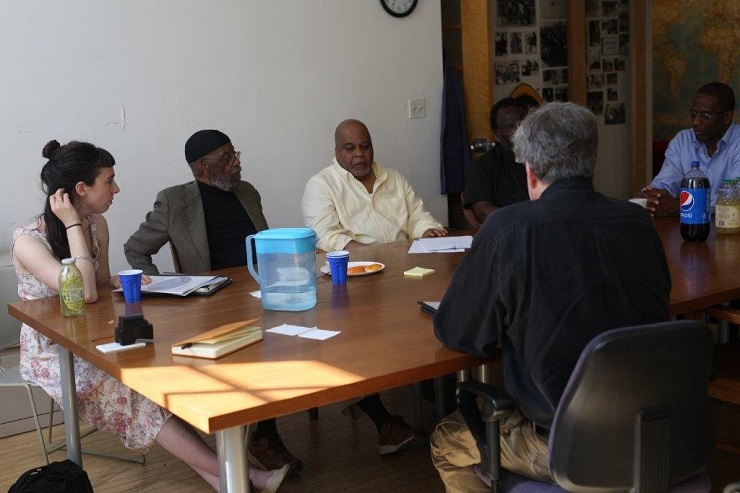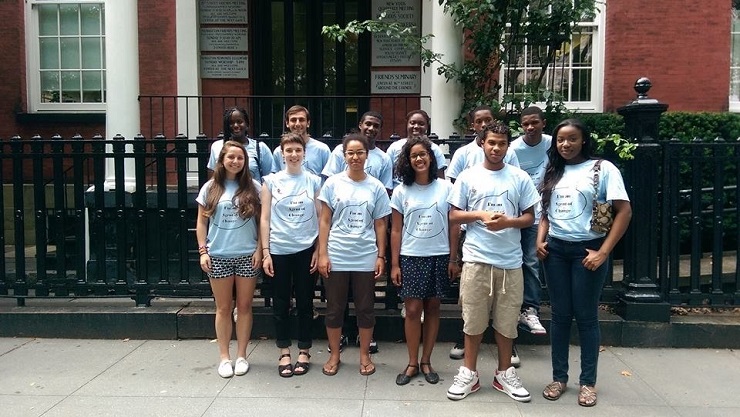
Note: Lewis provides sanctuary at AFSC's New York City office for currently and formerly incarcerated individuals, and provides safe space for young people in AFSC's Liberation Summer camp program who have a parent or sibling in prison. In this piece he reflects on what those spaces have meant for participants and for him. You can find part two here. - Christina
When I started this work in 2010 and realized my perspective was very limited, I immediately looked to people who had been incarcerated and the family members of those who are currently incarcerated and asked them what we should be doing. They each were excited to talk about major reforms, but in each of them I saw a pain that they were not talking about.

One of them actually said they wanted to come down to the office, but were having some trouble in doing so. I thought he meant he needed money for a metro card, but his issue was that after being incarcerated for 40 somewhat years, he didn't know how to cross the street and was afraid of the fast moving cars. When I heard that, I realized that we can change systems, but only until we provide a space for these people to re-socialize, and learn what it is to be here again. This has really been the most important part of the work I've done over the years, advocating not just for what I think needs to change, but what those who've lived the realities of incarceration know needs to change. It’s really about taking guidance and support and engagement from the communities that have been most impacted and about building a true healing justice paradigm here in New York.
The safe space we have created means formerly incarcerated individuals can learn how to have lunch with people because so often you either eat in a mess hall filled with 500 people in prison or you sit in your cell to eat, but you don't have those opportunities to sit and have lunch with three or four people who are casually talking about the day or sports or whatever it is. It certainly serves as a space for dialogue. We talk about the issues, we get perspectives that I don't have and we get bodies. There's a sign in this office that says, "Our life, Our story." One of them brought that to me and he said that that's what this space is.
Sanctuary Everywhere goes beyond immigration. It's not just hiding from someone or preventing someone from reaching you, it's feeling safe somewhere where you're not going to be judged, you're not going to be challenged in being successful in what you're supposed to be doing, and you're going to re-socialize. And if you need help using a computer or walking from here to the train, someone will walk with you. If you need to just relax outside of the confines of a halfway house or walking down Broadway, come here and we'll be there for you.
We have a similar activity in the summer here at this location. We call it a Liberation Summer camp where we work with another group who needs sanctuary: children of incarcerated parents.

What they do here is advocate for the issues that lead their parents to prison, or may lead them to prison. Ninety percent of the participants have a parent or sibling who is incarcerated, so they have the safety of commonality, and with that comes openness, energy and some fun. There’s also a freedom of, "I am not alone in this. I can share my story without being judged because the person I'm talking to is living the same reality."
I want to believe that that's sanctuary for them. They are stigmatized in society, but there are no stigmas here. Some young people are offered sanctuary here, people who have lived 50 years in prison find sanctuary here, and because of that I experience sanctuary here also by having them around me.
Read more about how communities have taken steps to create Sanctuary Spaces here.
Related posts
Sanctuary Spaces: An introduction
Sanctuary Spaces: A place for healing from incarceration – part 2
Sanctuary Spaces: Pushing back oppressive systems from the inside out - part 1
Sanctuary Spaces: Pushing back oppressive systems from the inside out - part 2
A sanctuary atmosphere: creating safe, emotional and mental space for people in solitary